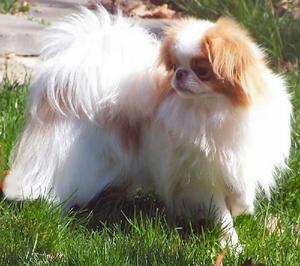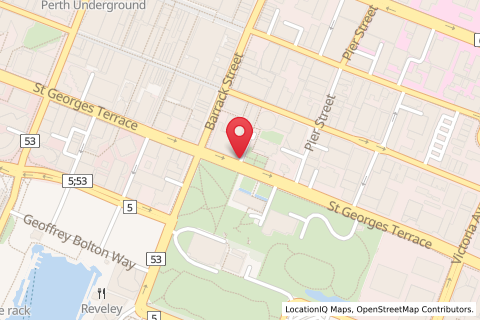Japanese Chin
About my dog breed
Breed Origins: Japan ( Dates back to antiquity ) Breed usage: Lapdog, ornament and companion Dog Weight: 1.4 kg - 3.2 kg Dog Height: 15cm to 27cm from shoulder to paw
Information, Facts & Origins of the Japanese Chin Dog Breed
The Japanese Chin originates from Japan and was bred originally as lapdogs and companions. Its origins can be dated back to Ancient Times in both Japan and China. It is said that the Japanese Chin was kept in birdcages by the Japanese imperial family. Legend has it that the Japanese Chin was given sake (a liquor made from fermented rice) to stunt his growth and keep him as small as possible. The Japanese Chin is also known by the other name of the Japanese Spaniel. This dog is classified as one of the Toy Dog Group which we go on to describe in detail in the section at the bottom of this page.
Description of the Japanese Chin Dog and Puppies - Coat and Colours information.
The Japanese Chin's coat is normally a variety of shades including sable, lemon and orange, most commonly white and black or white and red. The coat is normally full, long, soft and straight. He has a distinctively Oriental look about him, with an aristocratic appearance and stylish carriage. His eyes are placed wide apart with the whites showing at the inner corners and consequently, his efforts to look straight ahead tend to give him an endearing look of perpetual astonishment.
Dog Health information - potential health problems of the Japanese Chins
All owners of dogs and puppies are concerned about the health care of their pets and just as with humans dog health issues arise from time to time. Resolving dog health problems, including those of the Japanese Chin, can prove to be costly and it would be wise to consider the benefits of obtaining dog health insurance. Diseases in dogs may occur because of trauma, infection, immune system abnormalities, genetic factors, or degenerative conditions. Common health problems and questions occur in relation to the Bones, Joints, Muscles, Nerves, Ears, Eyes, Teeth and the Mouth. Other, more serious, issues can relate to the Digestive System, Heart & Respiratory Systems, Immune & Blood Systems, Reproduction and Urinary Systems. Potential health problems of the Japanese Chin can include:
- Eye Tearing - Quiet Snoring - Breathing difficulties - Problems whelping due to size
Information on Grooming and Care of the Japanese Chin Dog Breed
The Japanese Chin requires weekly care and grooming. All dog breeds require a certain amount of grooming and care is necessary to keep dogs and puppies looking at their best. Grooming consists of not only brushing out the coat and bathing but also giving attention to the eyes, ears,and feet. A regular routine also ensures that any potential health problems are identified as quickly as possible, especially important in puppies and older Japanese Chin dogs.
Life Expectancy information of the Japanese Chin Dog Breed.
The life expectancy for this particular breed is 14 - 16 years.
Age comparison between the Japanese Chin Dog Breed and a Human.
Age comparisons between dogs and humans are always a matter of debate - we hope that the following information clarifies the situation. After the first year of life, a dog is equivalent to sixteen human years. After two years, they are equivalent to a 24 year old, at three years a 30 year old, and each year after, add 5 human years to determine a dog's age.
Toy Dog Breed Information.
Dogs in the Toy Group, which include the Japanese Chin, were initially developed to ease the lifestyle and provide pleasure to rich people. These dogs were initially owned by the wealthy and were viewed by others as status symbols - a luxury item with little apparent purpose. Dogs in other groups had specific working roles and played a major part in providing food for the table and therefore justified the cost of their upkeep and care - these were the dogs which were commonly owned by the lower classes. Changes in the economy, lifestyles, living conditions and the environment brought the luxury and pleasure of owning a toy breed dog, such as the Japanese Chin, to everyone. The Toy dogs which includes the Japanese Chin are small and even diminutive in size. Toy dogs are generally easy care pet. They have a tendency toward very rare yappiness. Toy dogs are loyal and intelligent and especially good at learning tricks.
Toy Dog Breed Duties.
Characteristics and features of Toy Dogs, including the Japanese Chin, have been introduced and strengthened by breeding with animals who already demonstrated the desired traits. Breeding for appearance was only introduced in the 19th Century. Before this time dogs and puppies were bred to increase useful abilities and traits helpful for the duties they were intended for. Toy Group dogs had limited duties which included the following tasks were were specifically utilised in Oriental and European Courts by royalty and the nobility
- Warmth - A dog's temperature is between 100.2-102.8 degrees Fahrenheit. - Warmth - toy dogs sat on laps (hence the term 'lapdogs')
- Warmth - toy dogs warmed beds in cold castles and palaces
- Companionship
- Status symbols
Although toy dogs are most commonly known as lap dogs Oriental Emperors and courtiers carried them around in their copious sleeves!
Examples of other Breeds within the Toy Dog Group.
The Toy group includes the Japanese Chin and all of the following breeds:
Japanese Spitz, Affenpinschers, Brussels Griffons, Cavalier King Charles Spaniels, Chihuahuas, Chinese Cresteds, English Toy Spaniels, Havanese, Italian Greyhounds, Maltese, Manchester Terriers (Toy), Miniature Pinschers, Papillons, Pekingese, Pomeranians, Pugs, Shih Tzus, Silky Terriers, Toy Fox Terriers, Basenji, and Yorkshire Terriers (Yorkies).




